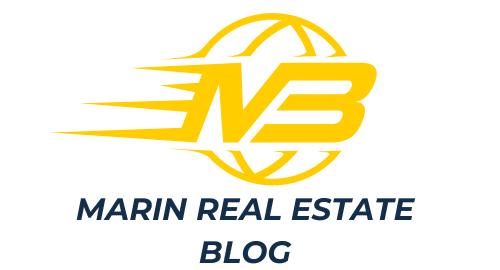What Are the Effective Cost Management Techniques for Small Businesses in a Tight Economy?

In these times of economic uncertainty, one question you frequently ask as small business owners is: "How can we better manage costs?" Especially when facing the prospect of a recession, it’s crucial to find effective ways to streamline operations and keep costs under control. In this article, we will explore strategies that can help you manage your costs effectively and maximize your revenue, even in a tight economy.
Understanding the Impact of a Recession on Small Businesses
Before delving into cost management techniques, let’s first gauge the impact of a recession on small businesses. A recession refers to a significant decline in economic activity spread across the economy, lasting more than a few months. The critical part to understand is that during a recession, consumer behavior changes drastically.
A lire également : How Can Small Businesses Leverage Networking for Growth and Opportunities?
During such turbulent times, customers become more cautious about their spending habits. They tend to cut back on non-essential purchases and become more price-sensitive, looking out for discounts and bargains. As a result, your revenue may decrease, and your cash flow may be negatively affected. Thus, understanding these changes in customer behavior can help you devise an effective business strategy to navigate through the economic downturn.
Adopting a Proactive Cost Management Approach
Don’t wait until the economic conditions become dire to start thinking of ways to cut costs. Adopting a proactive approach to cost management is essential to ensuring your business’s financial health. This means continuously monitoring your costs, analyzing financial statements, and identifying areas where you can reduce expenses without compromising on the quality of your products or services.
Sujet a lire : How to Develop an Effective Local SEO Strategy for Small Brick-and-Mortar Businesses?
For instance, if you notice that your marketing costs are draining your budget, you may need to reassess your marketing strategy. Are you spending money on marketing channels that aren’t bringing in enough customers? Are there more cost-effective ways to reach your audience? By asking such questions, you can identify areas where you can cut costs and allocate resources more efficiently.
Leveraging Content Marketing to Attract Customers
In times of recession, traditional marketing methods can be costly and ineffective. Instead, consider leveraging content marketing as a cost-effective strategy to attract and retain customers. Content marketing involves creating and sharing valuable content to attract a clearly defined audience. The goal is to establish your business as an authority in your field, build trust with your audience, and ultimately convert them into customers.
By providing useful and relevant content, you’re not only attracting potential customers but also improving your search engine rankings. This can lead to increased web traffic and, eventually, increased sales. Most importantly, creating content doesn’t have to cost much. With a bit of time and creativity, you can craft engaging content that resonates with your audience.
Implementing Effective Financial Management Practices
Implementing sound financial management practices is another critical aspect of managing costs. This includes regularly reviewing your financial statements, monitoring your cash flow, and maintaining a healthy balance between your income and expenses.
A common mistake among small businesses is failing to separate personal and business finances. Mixing these two can lead to confusion, making it difficult to keep track of your business costs. Therefore, it’s essential to separate your personal and business finances to clearly see where your money is going.
Additionally, consider using a business budget to manage your finances. A well-planned budget can serve as a roadmap for your business, helping you plan for future expenses, identify potential financial challenges, and make informed decisions about where to invest your resources.
Utilizing Technology to Lower Costs
In this digital age, technology can be a powerful tool to help small businesses cut costs. There are numerous cost-effective software and apps available that can help automate various business processes, thereby saving you both time and money.
For instance, you can use accounting software to automate your financial processes, reducing the need for hiring a full-time accountant. Similarly, project management tools can help streamline your operations, reducing inefficiencies and lowering operational costs.
Moreover, utilizing digital marketing tools can help you reach your customers in a cost-effective way. Social media platforms, for instance, can be a cost-effective way to engage with your audience, promote your offerings, and even offer customer service.
Remember, managing costs effectively is not about making drastic cuts, but about making wise decisions that can help your business thrive, even in a challenging economy. It’s about understanding your financial situation, being proactive, and leveraging the tools and strategies at your disposal to optimize your operations. With the right cost management strategies, you can not only survive an economic downturn but also strengthen your business for future growth.
Fostering Long term Partnerships for Better Pricing
Fostering long-term partnerships with suppliers can also contribute to effective cost management for small businesses. By cultivating strong relationships with your suppliers, you might be able to negotiate better pricing or payment terms, resulting in cost savings in the long run. Long-term partnerships often mean the ability to agree on prices for extended periods, mitigating the risk of price hikes.
Furthermore, suppliers might be more willing to extend flexible payment terms to businesses they have long-established relationships with, which can be particularly beneficial in a tight economy. This flexibility can also help to ease the strain on your cash flow, especially during times of a downturn.
Another advantage of fostering long-term relationships with suppliers is the potential for bulk discounts. Buying in larger quantities usually means a lower cost per unit, which again can lead to significant cost savings. It’s essential to balance this with the understanding of your inventory management to avoid overstocking and tying up your valuable cash reserves.
The key to achieving this is clear communication with your suppliers. Ensure that they understand your business needs and financial situation, and work together to find mutually beneficial solutions. Remember, your suppliers are likely facing the same economic challenges as you, so they’re usually open to discussions around pricing and payment terms.
Enhancing Employee Productivity
The productivity of your employees can significantly impact the operating costs of your business. A productive team can help improve efficiency, reduce waste, and ultimately, cut costs. Providing your employees with the necessary tools, training, and motivation can help enhance their productivity.
Start by ensuring your team has the right tools to do their job effectively. This might mean investing in modern software and equipment, but the long-term benefits often outweigh the initial outlay. Remember, outdated or inefficient tools can lead to wasted time and mistakes, both of which can cost your business money.
Training is another crucial aspect of enhancing productivity. By investing in your employees’ skills, you’re not only increasing their efficiency but also their job satisfaction, which can lead to reduced turnover rates – another cost-saving benefit.
Motivation, however, doesn’t necessarily mean financial incentives. Often, recognizing employees’ efforts, providing constructive feedback, and promoting a positive work environment can be just as motivating. It’s about understanding what drives your employees and leveraging that to improve productivity.
Remember, your employees are your most significant asset, and their productivity directly impacts your business’s bottom line. Therefore, investing in their productivity is an effective cost management strategy in the long run.
Conclusion
These cost management techniques can help small businesses navigate through the challenges of economic downturns and recessions. The ultimate goal is to maintain profitability without sacrificing the quality of products or services offered. By understanding your customers’ changes in spending behavior, adopting a proactive approach to cost management, leveraging content marketing, implementing sound financial management practices, and utilizing technology effectively, small businesses can both survive and thrive even in the most difficult economic times.
Also, fostering long-term partnerships and enhancing employee productivity can lead to significant cost reduction. It’s about making smart and strategic decisions about where and how to spend your money, which can lead to both short-term cost savings and long-term business growth.
Ultimately, economic downturns and recessions can provide an opportunity to reassess your business practices and make necessary changes to become more efficient and competitive. While these times can be challenging, with the right strategies and mindset, small businesses can emerge stronger and more resilient.
